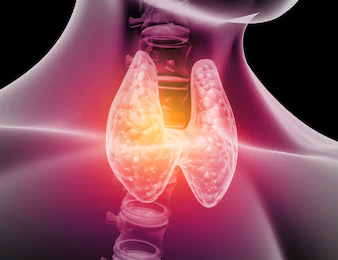Obesity
Pediatric and adult endocrinologist are now increasingly facing the challenge of childhood obesity not only in developed countries but also developing countries like India. It is ironic that the problem of childhood obesity has emerged in India while we are still fighting malnutrition. Obesity which is said to be an epidemic public health problem is now given a status of “Disease” by American Association of Clinical Endocrinology (AACE) and American Medical Association (AMA) and it deserves this status considering its long term complications in multiple systems of an individual. On average, obesity reduces life expectancy by six to seven years, while severe obesity defined as BMI greater than 40 reduces life expectancy by ten years.
In India, the secular trends show a rising prevalence of childhood obesity – about 2 fold increasing prevalence than that reported 2 decades before. The prevalence of overweight was estimated to be 12.64% and that of obesity to be 3.39% in the age group of 2 – 19 years
Childhood obesity can lead to life-threatening conditions like Type 2 diabetes mellitus, hypertension, dyslipidemia, obstructive sleep apnoea, cancer, non-alcoholic steatohepatitis, slipped capital epiphysis, early puberty, psychiatric disorders, asthma and other respiratory problems, hyperuricemia, depression, low self-esteem and ultimately shorter life expectancy. Consumption of high calorie foods, physical inactivity and increased screen time are major risk factors for childhood obesity apart from other genetic, prenatal factors and socio-cultural practices.
All obese children should be examined for any syndromic feature, cushingoid features, short 4th metacarpals, goitre, acanthosis nigricans, hepatomegaly, hypogonadism and lipomastia. Penis buried under the supra-pubic pad of fat may give a false appearance of micropenis (buried penis). Presence of hyperandrogenic features in an obese adolescent girl could be due to polycystic ovarian syndrome (PCOS).
All children and adolescents in India with simple obesity should have BP checked and undergo oral glucose tolerance testing (OGTT), lipid profile, SGPT, SGOT.
Weight maintenance rather than weight loss is the 1st step for growing children with obesity.
- Consuming ≥5 servings of fruits and vegetables per day.
- Minimize or eliminate sugar sweetened beverages and fat from diet
- Limiting television viewing and other screen time (no television viewing before 2 y and <2 h per day after 2 y of age).
- Eating breakfast daily
- Limiting eating out at restaurants especially fast food joints
- Encouraging family meals at least 5–6 times per wk.
- Recommend more than one hour of physical activity per day
Drug treatment is not generally recommended for children less than 12 years and not FDA approved. Orlistat is indicated for obese children ≥12 years of age with an initial body mass index (BMI) ≥ 30 kg/m² or ≥ 27 kg/m² in the presence of other risk factors (e.g., hypertension, diabetes, dyslipidemia). The recommended dose of orlistat (xenical) is one 120-mg capsule three times a day with each main meal containing fat (during or up to 1 hour after the meal). Metformin, a biguanide drug that improves insulin sensitivity, is approved for treatment in children with T2DM. It is important to keep in mind that drugs have no role in obesity management without concomitant use of dietary regulations, exercise and life-style modification.


